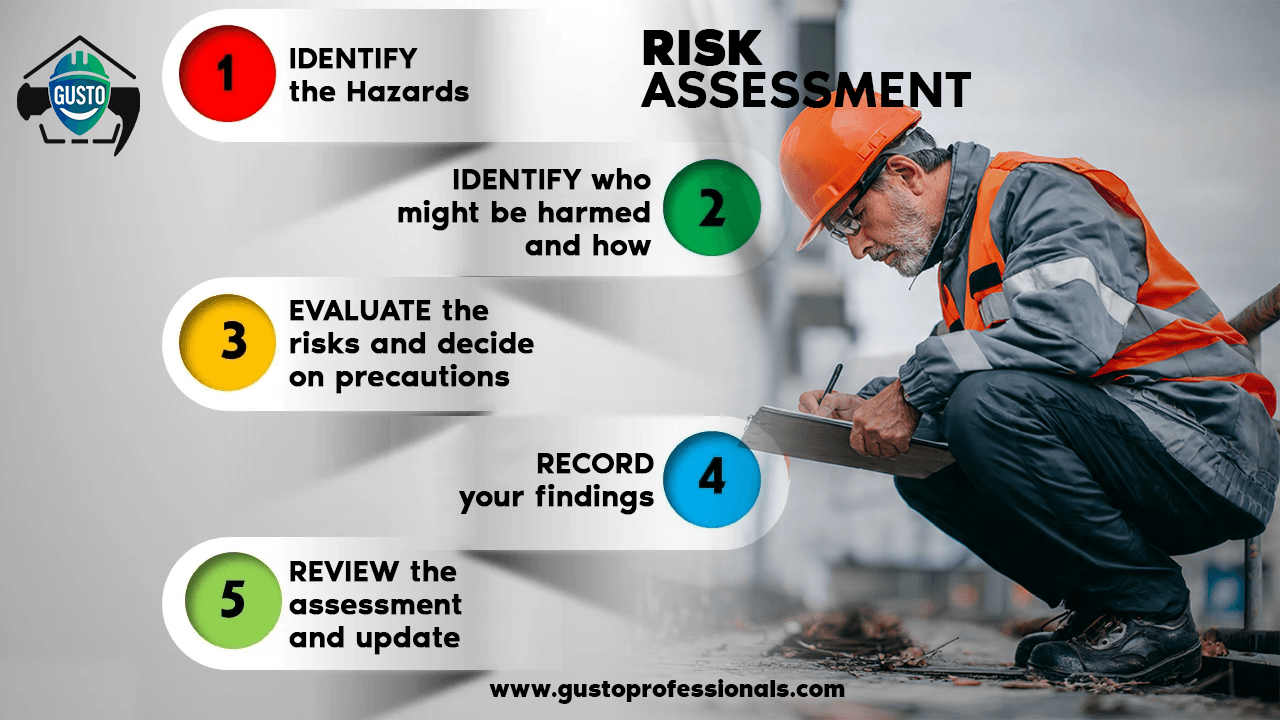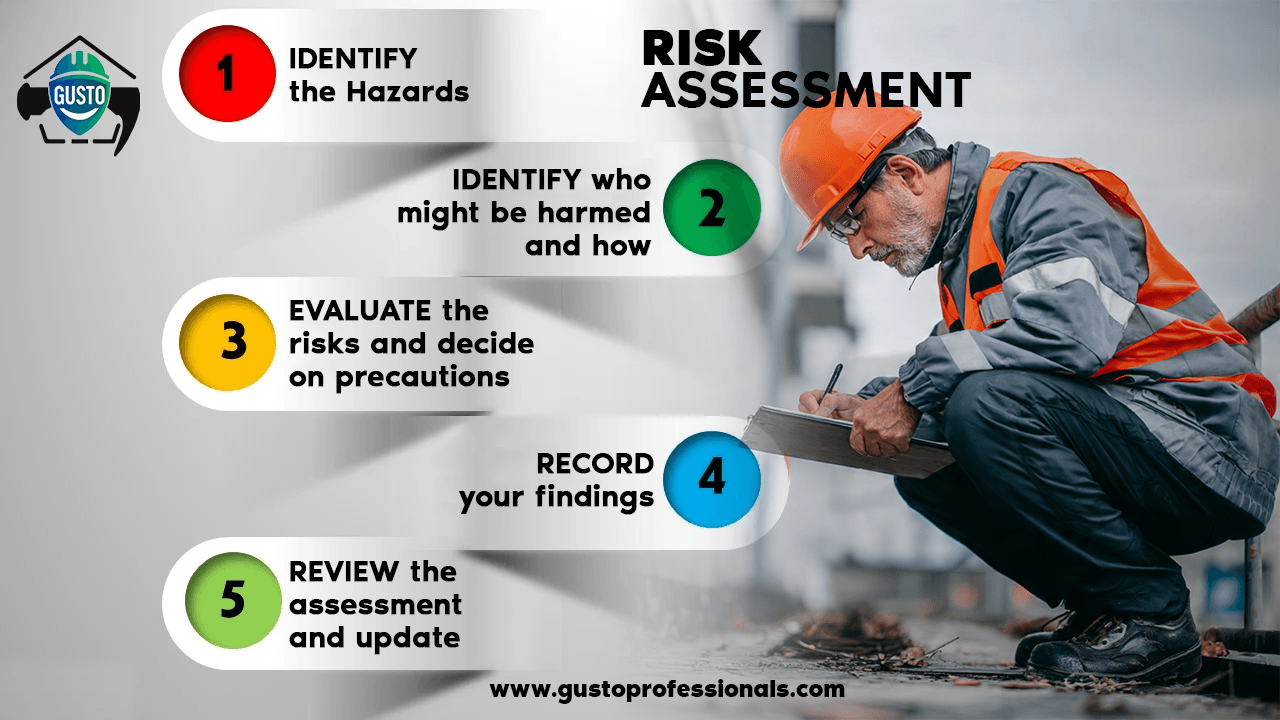
article
Conducting a Risk Assessment
6 Oct 2025 | 1 min read
Go back
Conducting a Risk Assessment
The 5 steps of a risk assessment:
Identify the hazards
. Look for anything that could cause harm. A hazard is anything with the potential to cause injury or damage to people, property, or the environment. Examples include sharp objects, loud machinery, or harmful substances.
Identify who might be harmed and how
. This step involves pinpointing individuals or groups at risk and the specific ways they could be harmed. Consider employees, visitors, contractors, or the public and how they might be affected by each hazard.
Evaluate the risks and decide on precautions
. Assess the likelihood of a hazard causing harm and the severity of that harm. Tools like a risk matrix, which rates risks based on likelihood and impact, can be used for this step. Based on the evaluation, determine and implement control measures to mitigate the risks.
Record your findings
. Document the identified hazards, the risks they pose, and the controls put in place. This record-keeping ensures accountability and provides a reference for future assessments.
Review the assessment and update if necessary
. Regularly review the risk assessment to ensure its continued effectiveness. Update it whenever there are significant changes to the workplace, equipment, or processes.
